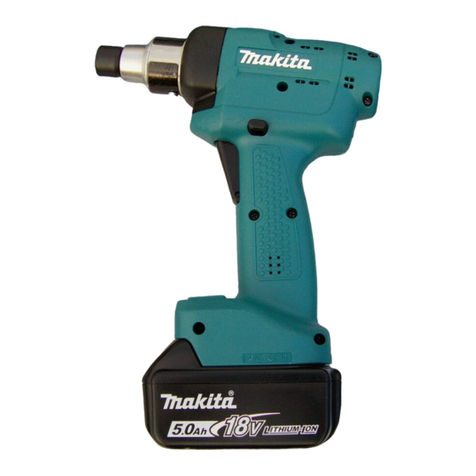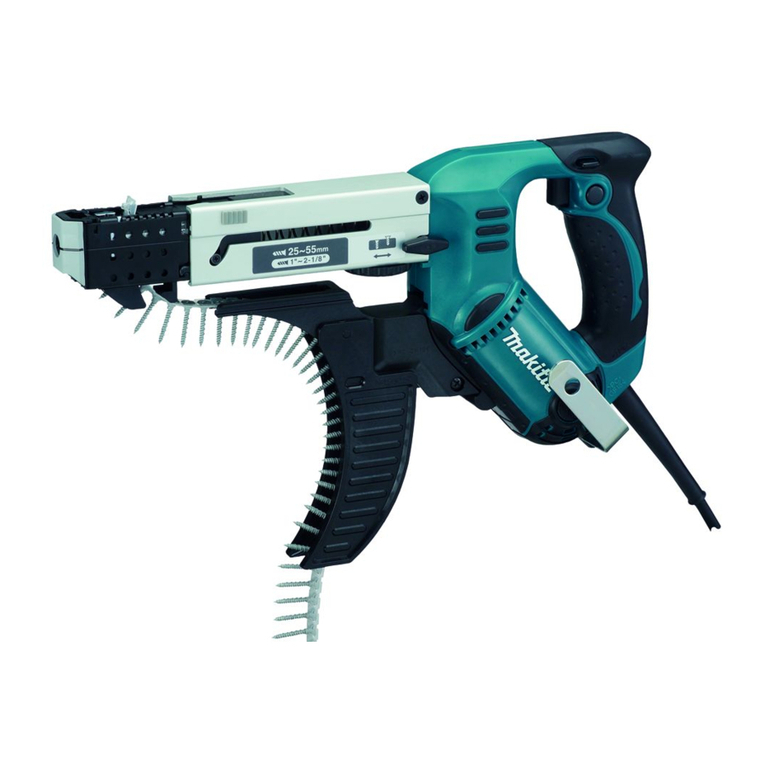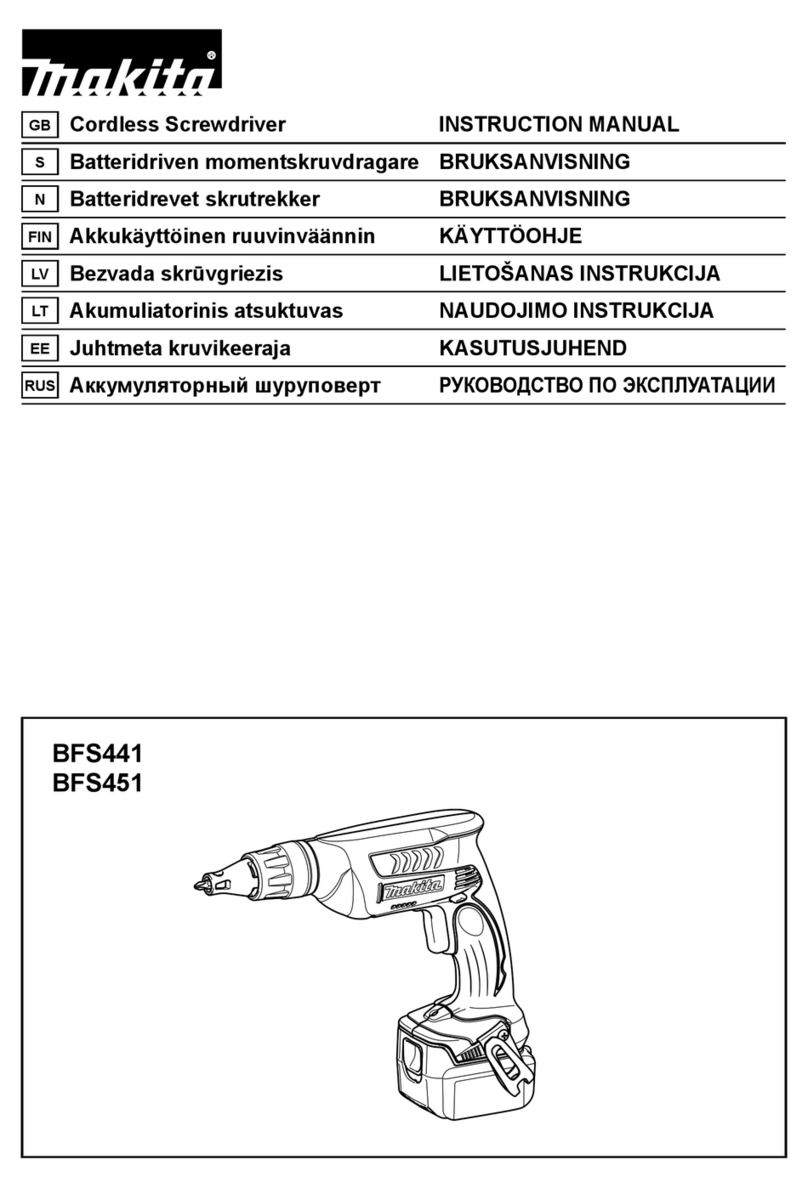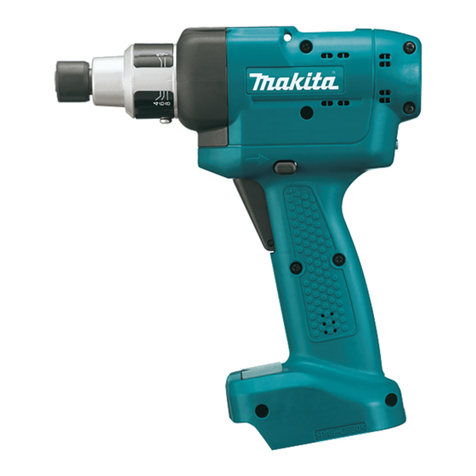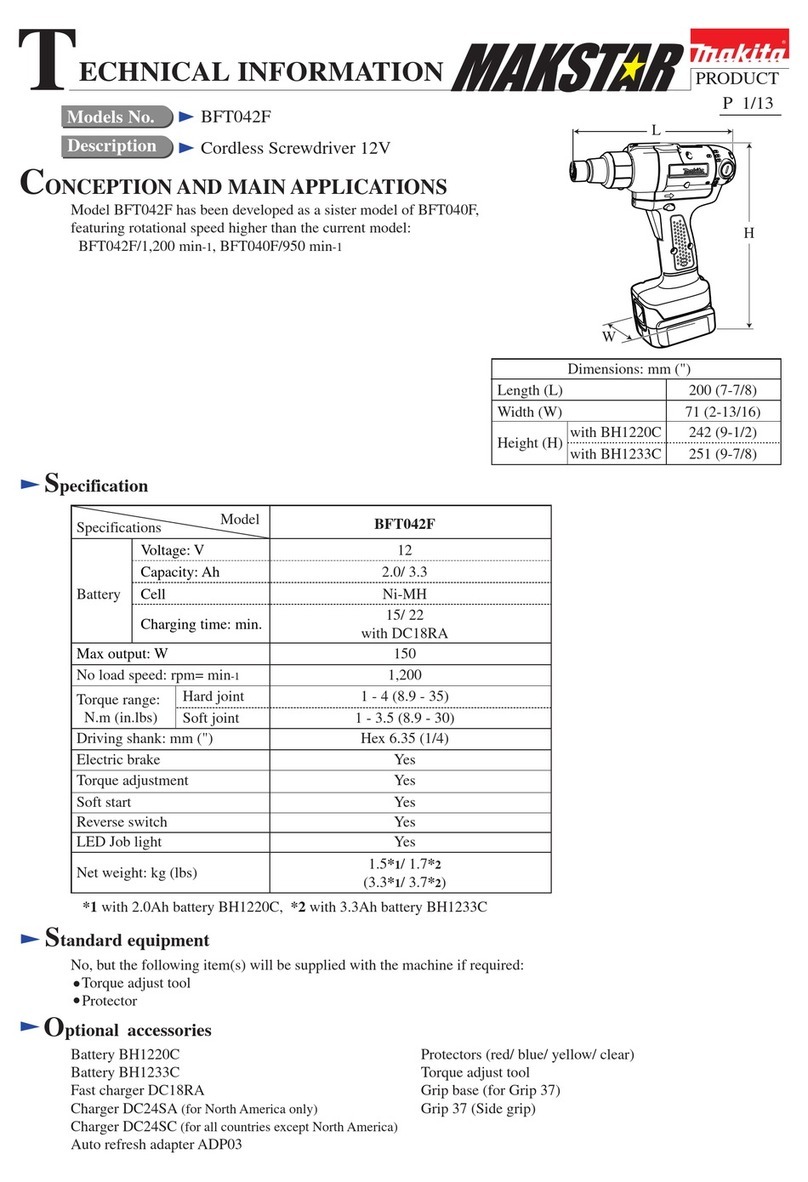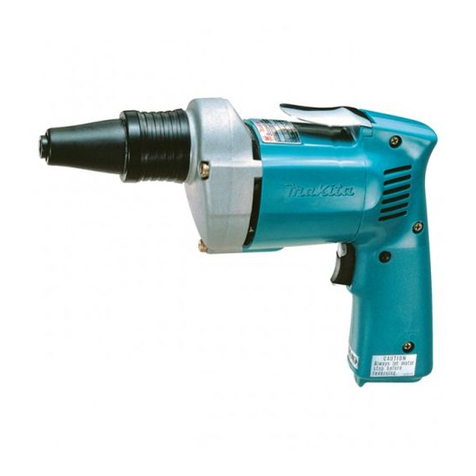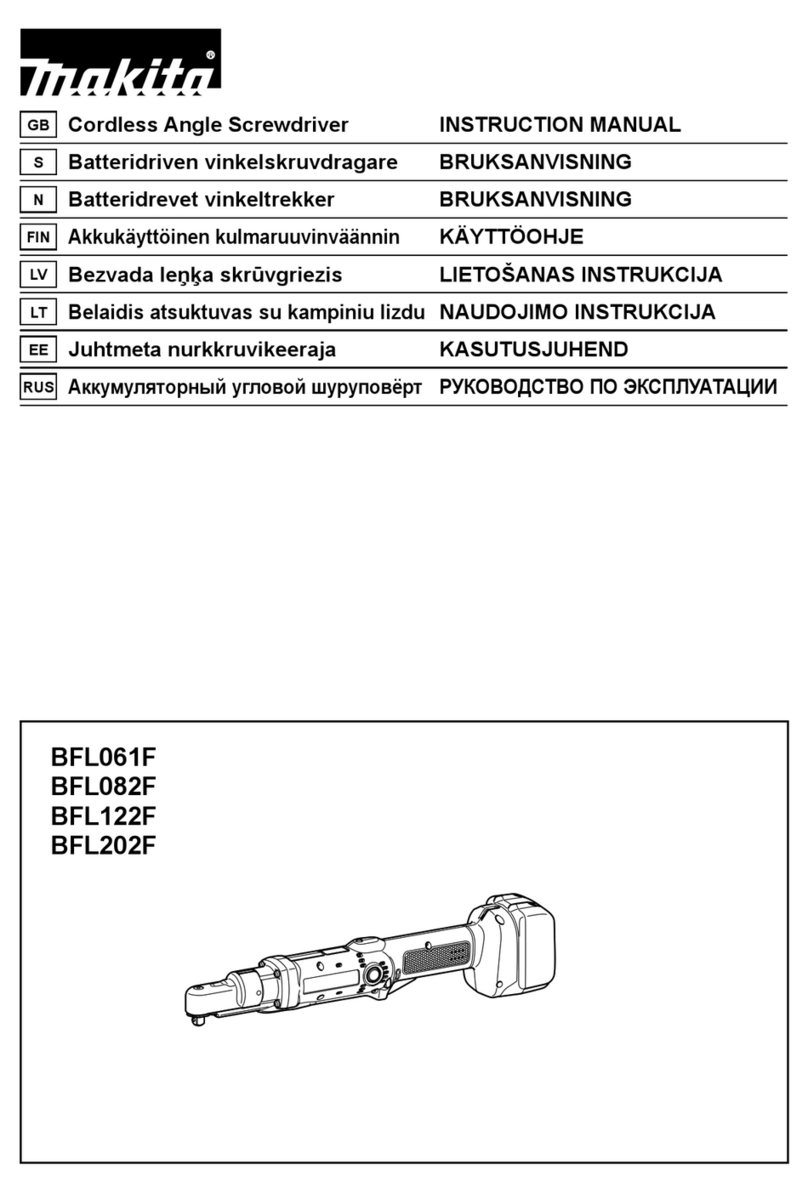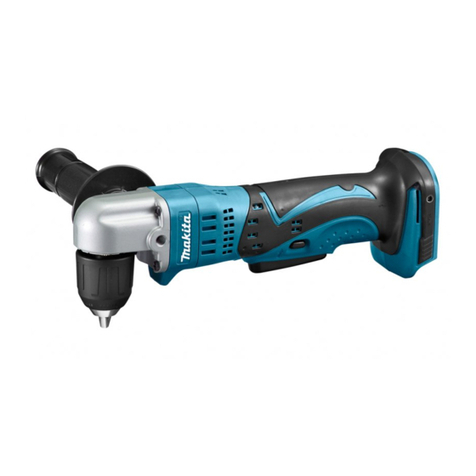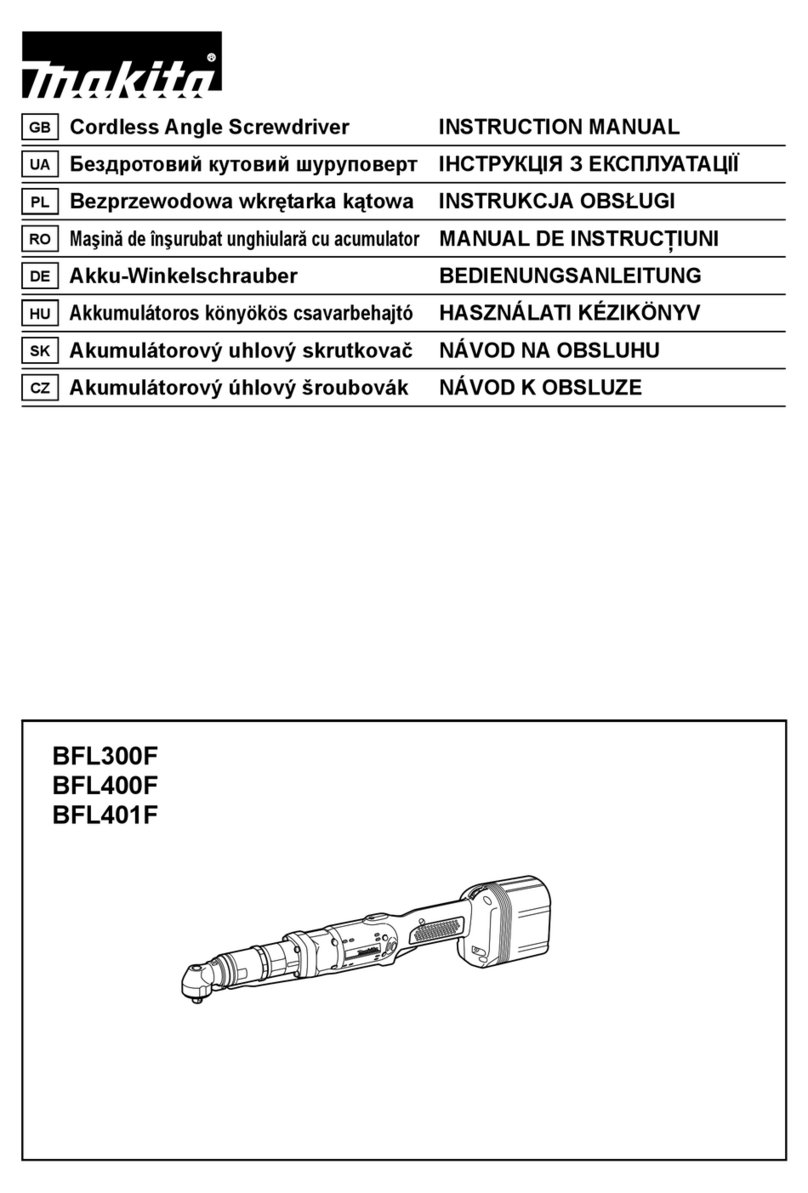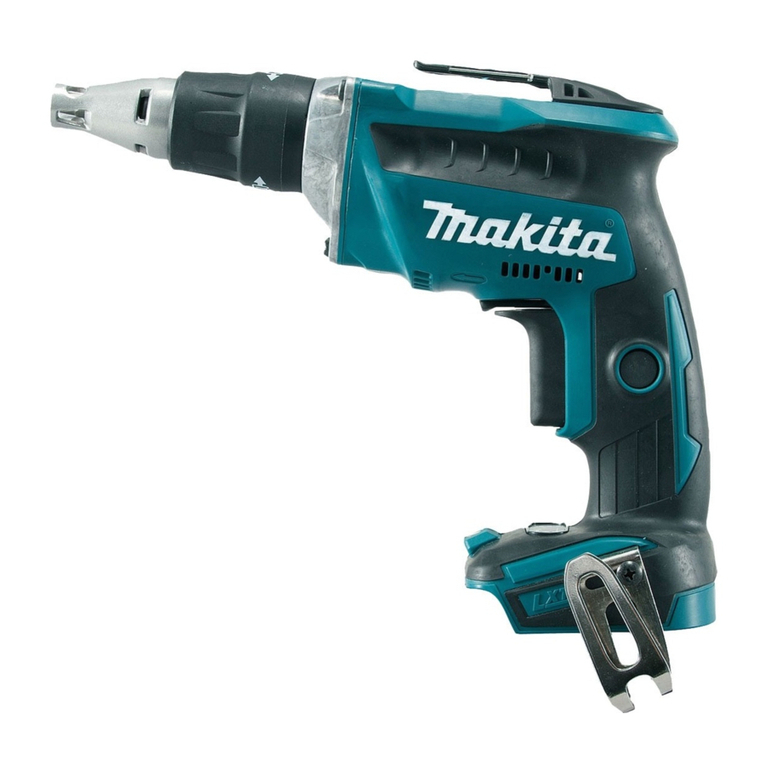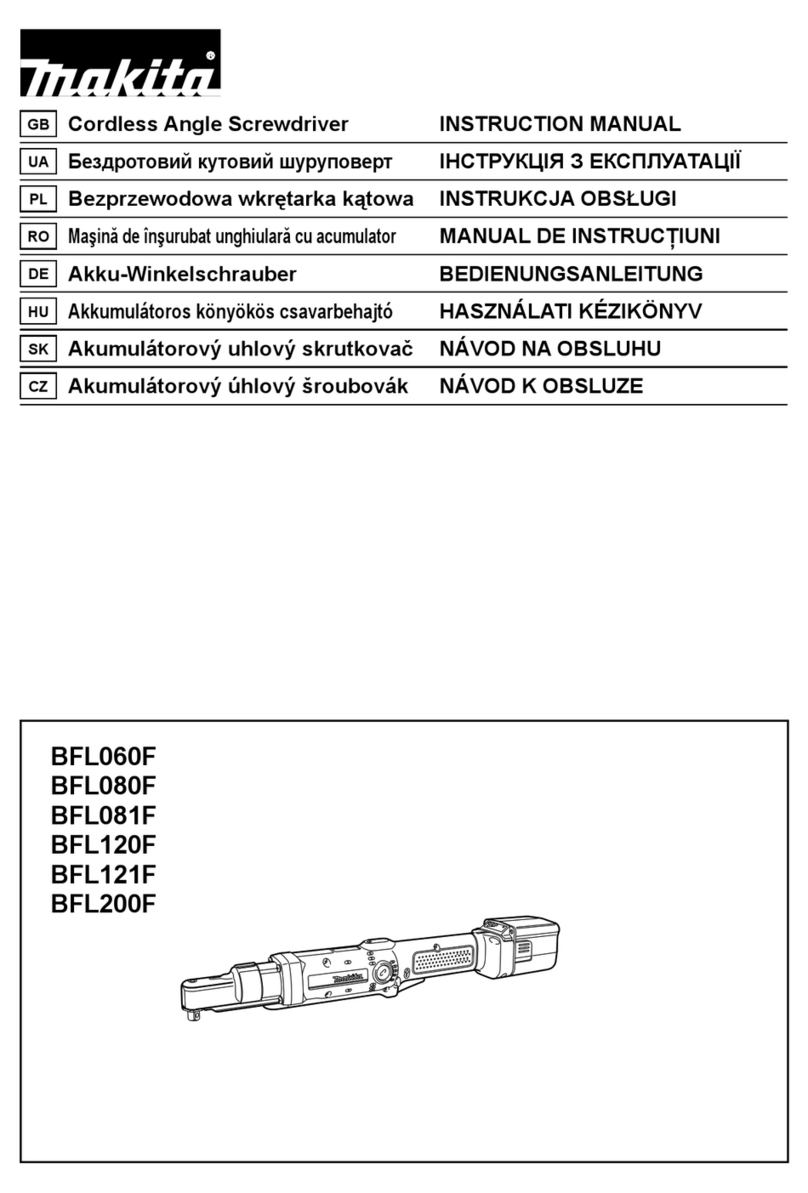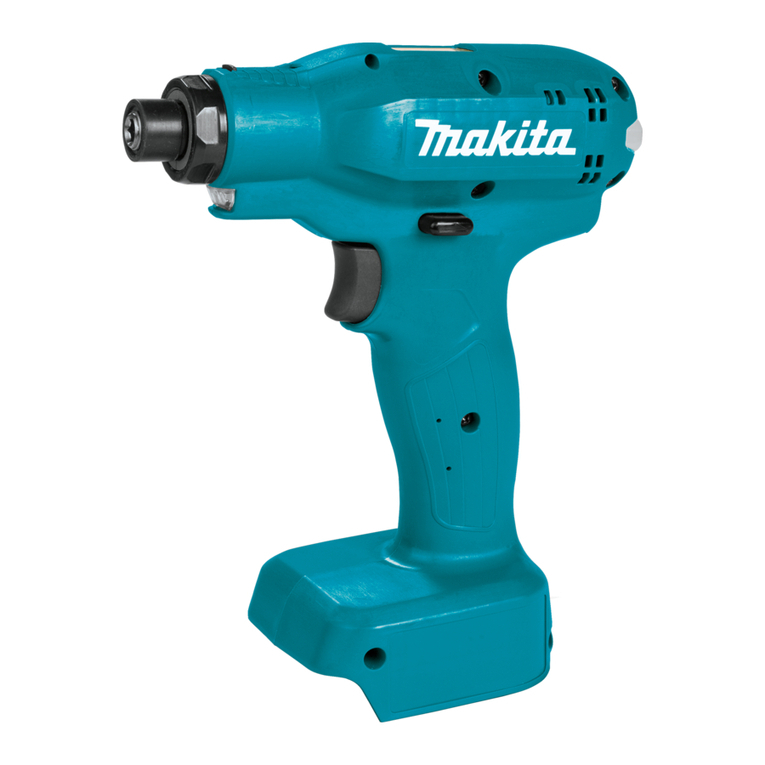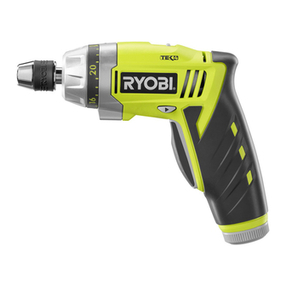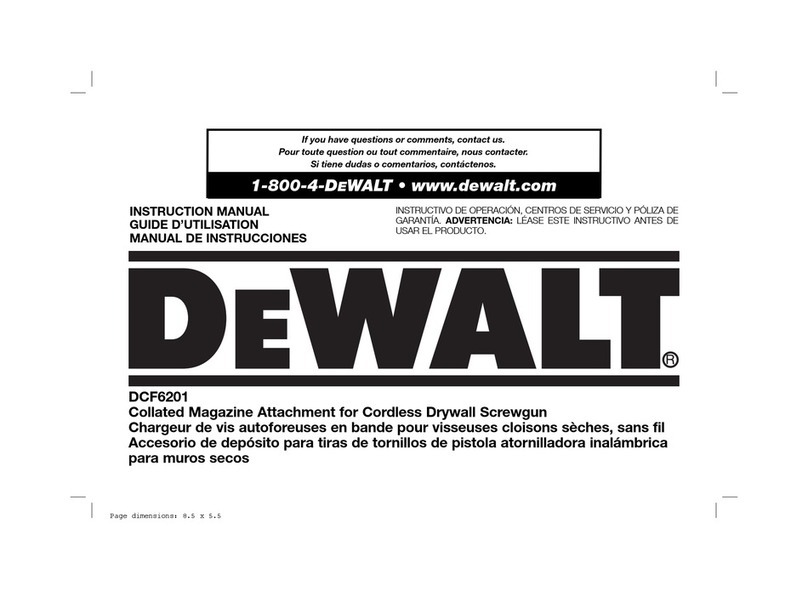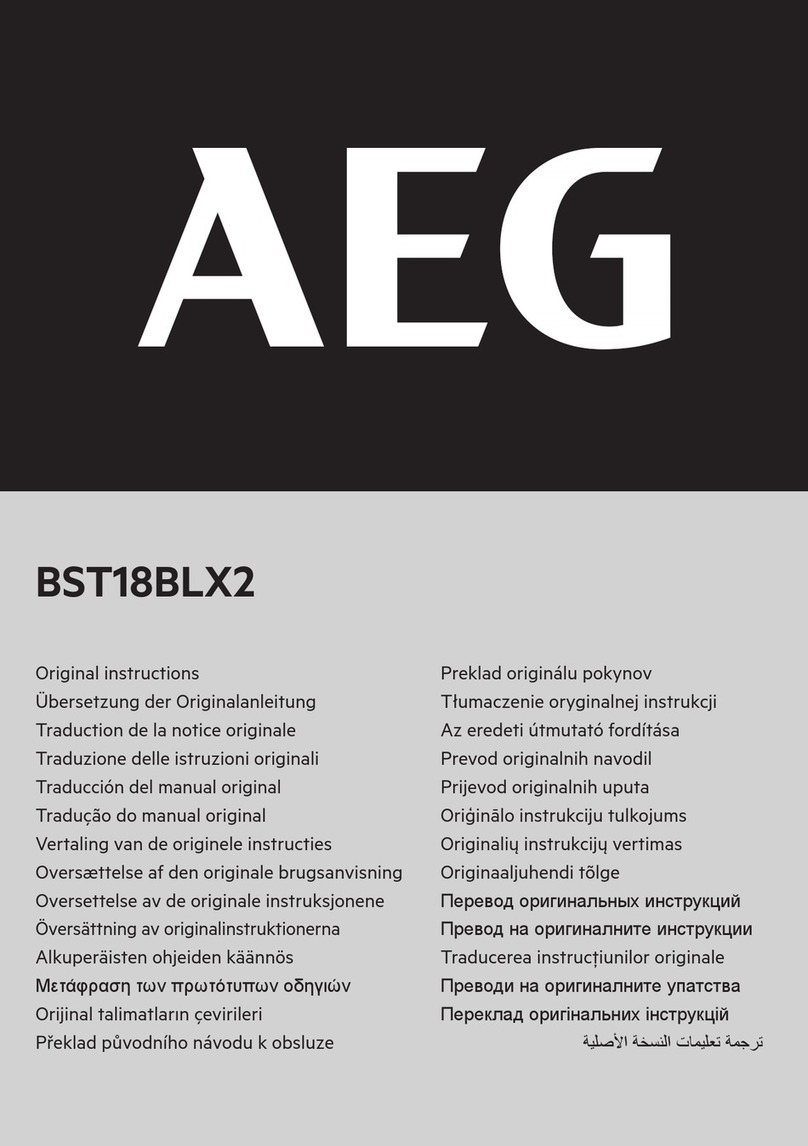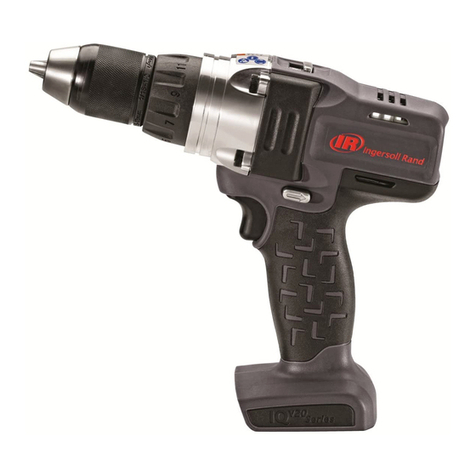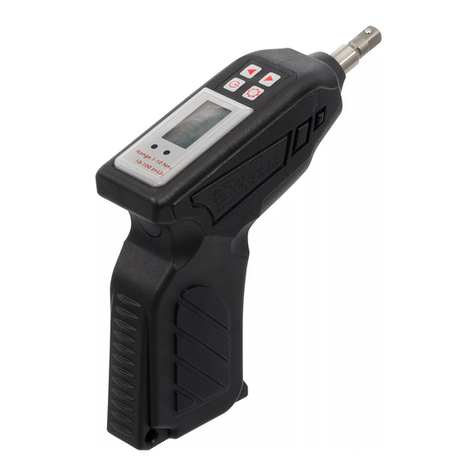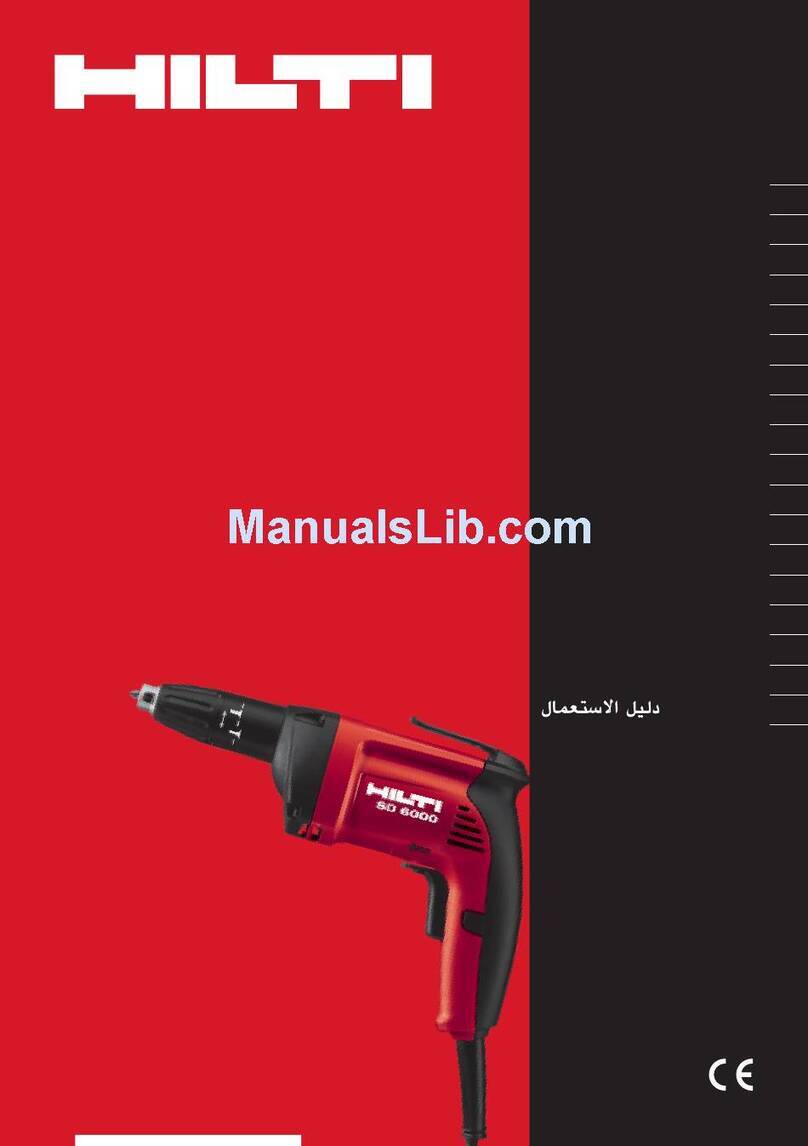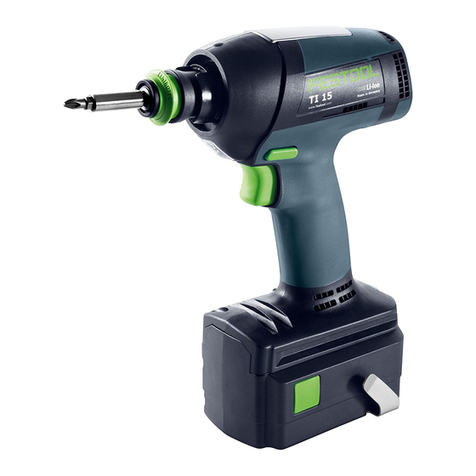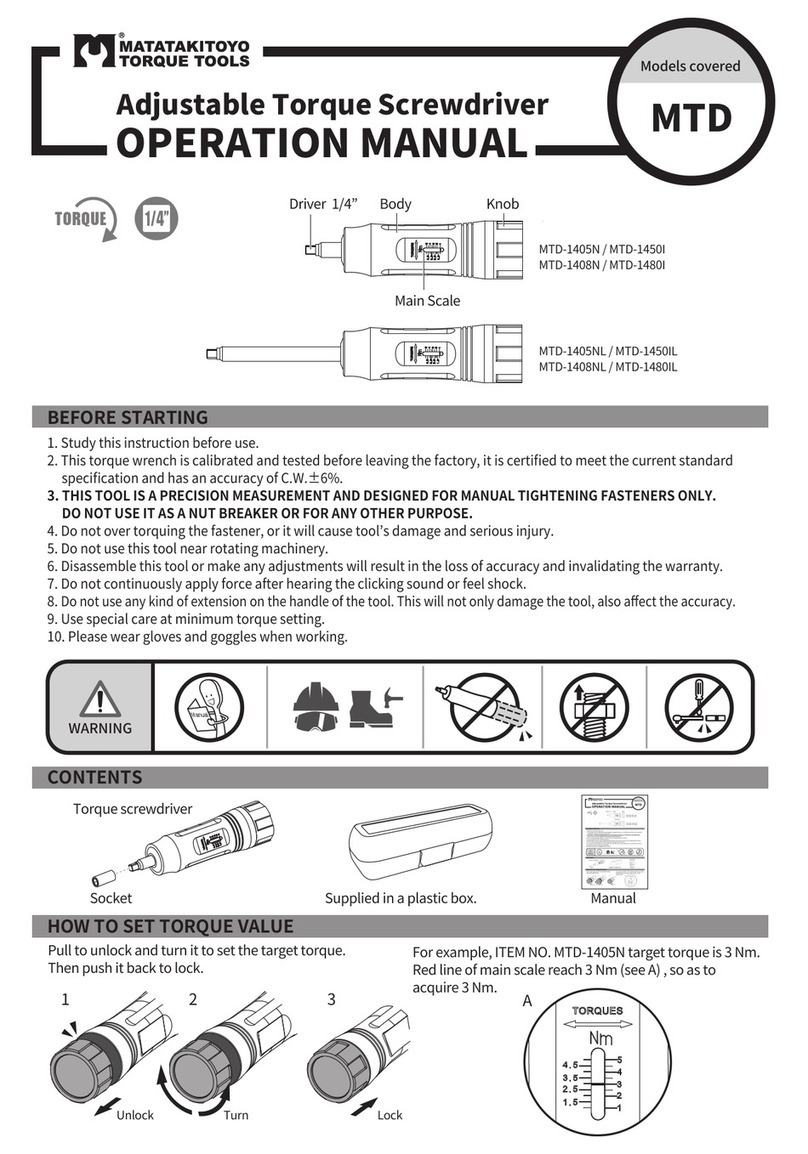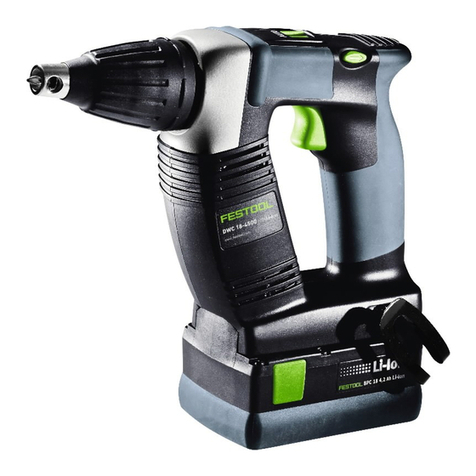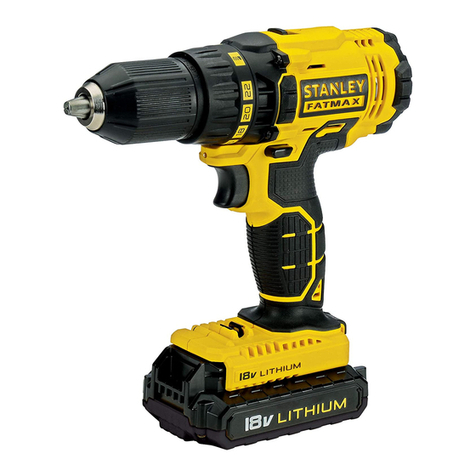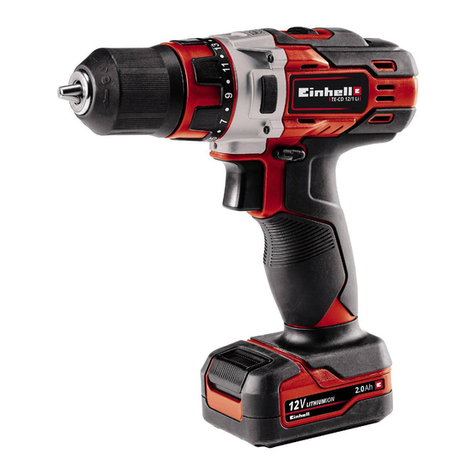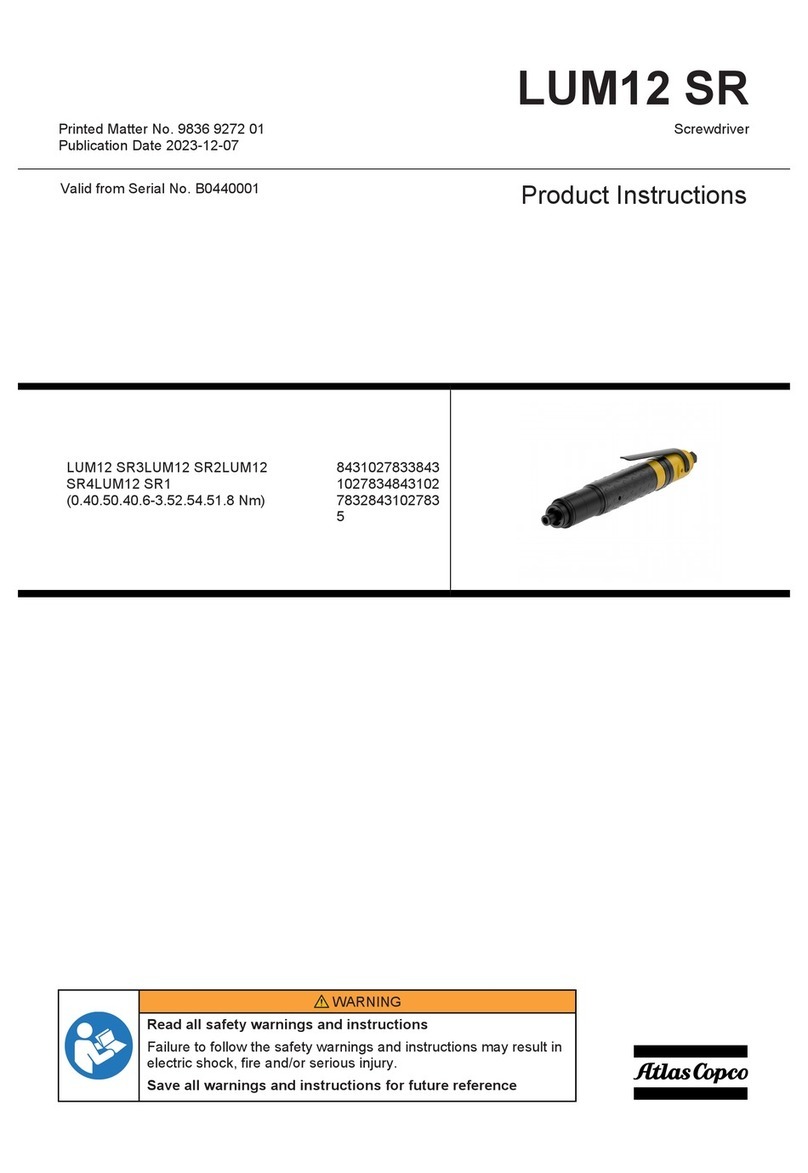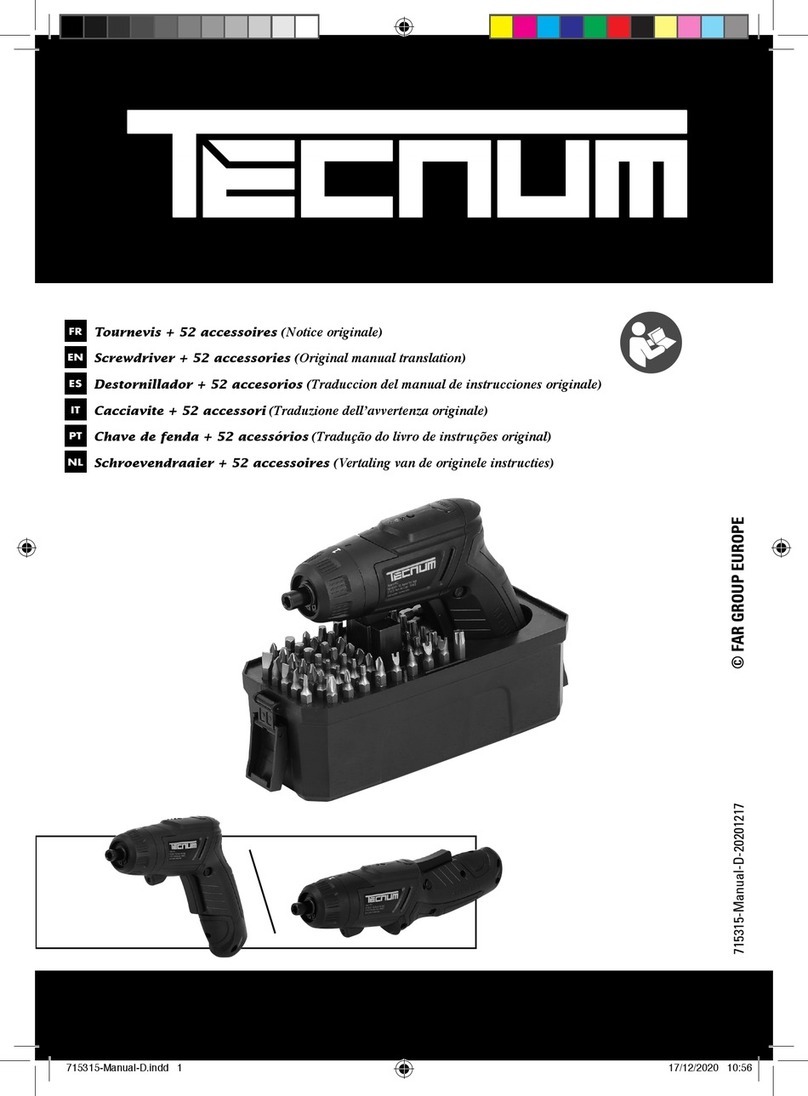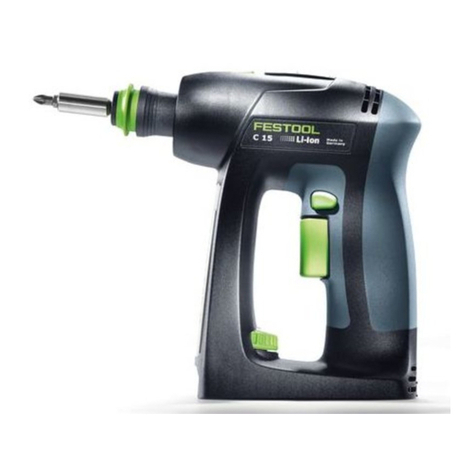Model No.
Description
PRODUCT
CONCEPT AND MAIN APPLICATIONS
P 1/16
Specification
BFR540, BFR550, BFR750
Cordless Auto Feed Screwdriver
Models BFR540, BFR550 and BFR750 have been developed
as the advanced models of Model BFR440, featuring higher durability.
These models feature more reliable casing attachment
with the following benefits:
Rigid aluminum casing
Stopper base with anti-tilt device for preventing screws from swaying
Rubber cap securely fixed to stopper base
Dust-proof construction for smooth sliding action
These products are available in the following variations.
Dimensions: mm (")
Width (W)
Height (H)
Length (L) 424 (16-3/4) 464 (18-1/4)
BFR540/BFR550 BFR750
80 (3-1/8)
238 (9-3/8)
L
H
W
Specification
Net weight**: kg (lbs) 2.1 (4.6) 2.3 (5.0)
Model BFR550 BFR750BFR540
4 (5/32)
25 to 55
(1 to 2-3/16)
45 to 75
(1-3/4 to 2-15/16)
Diameter
Overall length
4,000No load speed: min.-1 = rpm
Driver bit: mm (")
Capacities: mm (")
[collated drywall screw]
Reverse switch
6.35 (1/4) Hex
162 (6-3/8) or 157 (6-3/16)
Shank
Overall length*
Yes
*Overall length of driver bit may differ by country.
**BFR540: includes battery BL1430; BFR550/ BFR750: includes battery BL1830
Battery
Cell
Voltage: V
Capacity: Ah
Li-ion
14.4 18
3.0
Li-ion
3.0
Max output: W 235 235
(The image above is BFR540.)
182 (7-1/8) or 177 (7)
All models also include the accessories listed in "Standard equipment".
BFR540
BFR540RFE
BFR540Z
BFR540 BL1430
(Li-ion 3.0Ah) DC18RA
No No No
Model No. type quantity Charger
Yes
No
Plastic
carrying case Offered to
All countries
North America
All countries except North America
2
BFR540RFE3 3
1
2
Battery
BFR550
BFR750
See next page for "Standard equipment" and "Optional accessories".
TECHNICAL INFORMATION
Battery
cover
BFR550RFE
BFR550Z
BFR550 BL1830
(Li-ion 3.0Ah) DC18RA
No No No
Yes
No All countries
North America
All countries except North America
2
BFR550RFE3 3
1
2
BFR750RFE
BFR750Z
BFR750 BL1830
(Li-ion 3.0Ah) DC18RA
No No No
Yes
No All countries
North America
All countries except North America
2
BFR750RFE3 3
1
2
